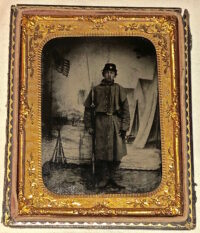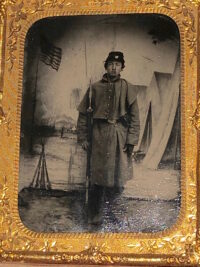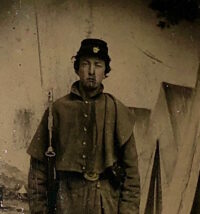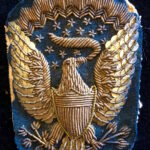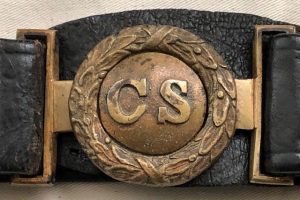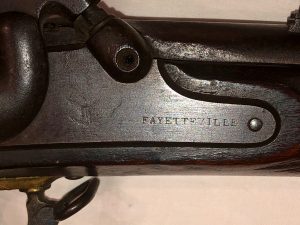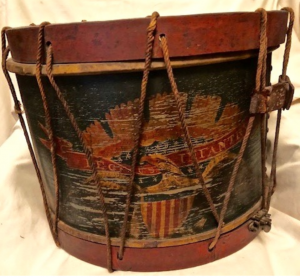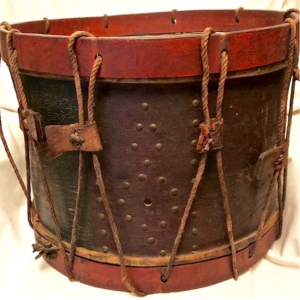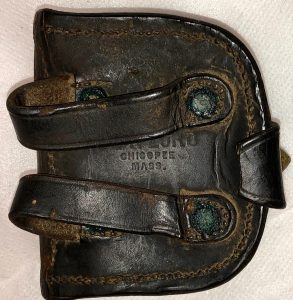Quarter Plate Tintype of a Young Union Infantry Private in Front of a Flag and Camp Scene Backdrop
SOLD
Quarter Plate Tintype of a Young Union Infantry Private in Front of a Flag and Camp Scene Backdrop – This quarter plate tintype is housed in a half case, with its original mat, preserver and cover glass. The image depicts a full, standing view of a young, Union infantry private; he is wearing his issue greatcoat, with his belt and US plate visible, as well as either a cap box or cartridge box suspended from the belt; his forage cap appears to be an early war issue, Type I style; he is holding his musket, which appears to be a M1842, with its bayonet attached. The photographer’s backdrop depicts a faux tableau of a camp scene complete with tents, stacked muskets, what appears to be mountains in the background and a U.S. flag fluttering on a flagpole. The image is in overall good condition, with some relatively minor scrapes and ripples in the emulsion. Like many Union images we have encountered, there also is a very slight bend, with no impact in the emulsion, in the plate. This image is a very nice photograph of an early war, armed, young, Union infantryman.
A thoughtful and knowledgeable image collector contacted us and offered this additional analysis of this image:
“I recognize the backdrop as what I labelled the “Camp Michigan backdrop” in an article in Military Images magazine. The Library of Congress has another tintype of two unidentified soldiers with the same backdrop identified that way. All the identified soldiers appearing in front of that backdrop were members of Israel Bush Richardson’s Brigade (whose Camp Michigan was located south of Fort Lyon, south of Alexandria) or of Jameson’s Pennsylvania brigade (camped in Hybla Valley southeast of Fort Lyon). I infer that the photographer set up his tent at Camp Michigan and/or at Fort Lyon. As for the date, the itineraries of the identified regiments and the weapons and uniforms depicted leave no doubt that Camp Michigan backdrop photos date from December, 1861 to March, 1862.”






